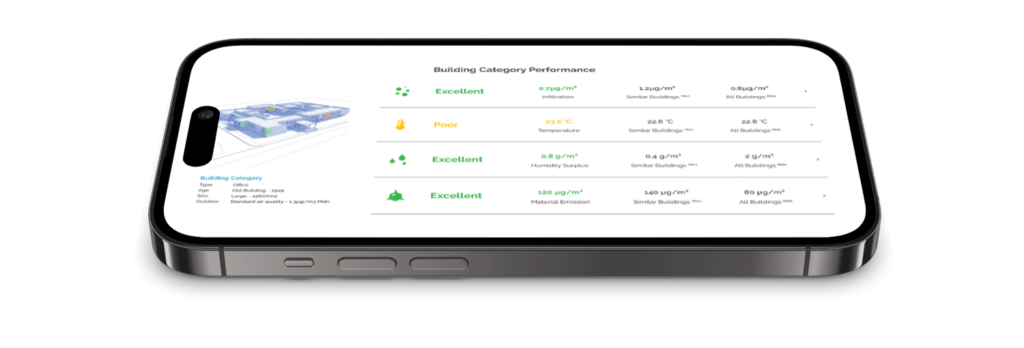The question we asked that led to founding 720° was: What if we can deploy a network of sensors in buildings with enough paired metadata and reliable external data sources that will tell us exactly how the built environment impacts the people in it, in order to reliably tell customers what actions they should take to improve the indoor environment, and let the people inside the buildings know what exactly is being measured and how it impacts them?
We asked this before installing a single sensor, in fact even before having a clue what sensors to use. It was apparent from some studies in the field that one factor in buildings kept boggling the sharpest minds in engineering… the people occupying them.
People were a nuisance to some experts, for good reason, since most commercial buildings are essentially designed to be empty. Unless you work or go to school more than twelve hours per day on average this will still be true for a while. The people in these buildings emit carbon dioxide and are the cause of most disturbing sounds you can find in an office, but added to this, they can even be dissatisfied with optimal (measureable) conditions even when they are explicitly told to not be dissatisfied.

Why would we have anything to do with this?
Why should we be the ones innovating in this field? None of us had a love for construction and we were really just passionate about technology and organisational theory. Industry outsiders with a passion for an adjacent but essential field of study. Technology such as IoT, Big Data, AI was not widely adopted in buildings, and organizational theory was not widely studied within facility management. Oh, how the times have changed…
Our interest peaked by our potential to disrupt, and we ran with it. We did however need to figure out if there are any prerequisites for success – in order to pivot quickly in case they change. Since the start of the company we shaped some initial tenets, and then followed closely as the original tenets stayed unchanged.
- We assumed that sensor technology innovation would accelerate extremely fast due to advancements in battery and sending protocol technologies
- This would result in an overflow of information, and that we could create long term value by being first to organise, analyse and communicate this information
- Lastly we assumed that any incumbent companies would struggle with commercializing a layer on top of competing incumbent technologies, which gives room for a highly specialized smaller actor to disrupt the industry.
… enter 720°.
In today’s ‘Intelligence age’ we could assume some of those tenets would be adjusted as we moved along, but it was impossible to know exactly how. I usually refrain from making bold estimates in the middle of large hype cycles, and rather stick to fundamentals. We knew we were in a position to take advantage of those tenets, and have since done so.
What did we need to innovate?
The current innovation in AI is not unlike the innovation in 720°, at a smaller scale of course.
We deal with vast amounts of data. A lot of the data is proving assumptions wrong – assumptions about how the indoor environment affects us are quite often wrong. Especially when there are loads of commercial incentives behind the assumptions.
Our innovation is to do the hard work in slowly but surely improving and expanding our data collection of verifiable data from buildings and people. We shun away from poor methodology that did initially excite customers but that does not provide long term value. In fact some methodology likely destroys value – Surveys are a good example of this, which is uncomfortable to some of the brightest minds in engineering, who see a tool they think will work all while organisational theory has a very rigid answer to if surveys provide value: It depends! In this case that means there are cases where it is detrimental to the long term value of buildings overall to use them, and it is difficult to anticipate exactly when that is not the case. This is true for many other tools, methods and technologies.
Innovation is not just about having an idea and putting it into action. It is the hard work of doing research, talking to prospects, developing on the ideas, seeing how they work – it is not for the easily deterred. Innovation can easily be a ten year process of rigid hard boring work. The best kinds of innovations are counter-intuitive and very hard to come by. Successful innovation is simply hard work, just like with other hypewords today’s kids are excited by (e.g. strategy or leadership).
Innovation is not exciting. Innovation is a small step in the right direction of improving our world. It can be boring to you, but our children will thank you for your focus and determination – to innovate!